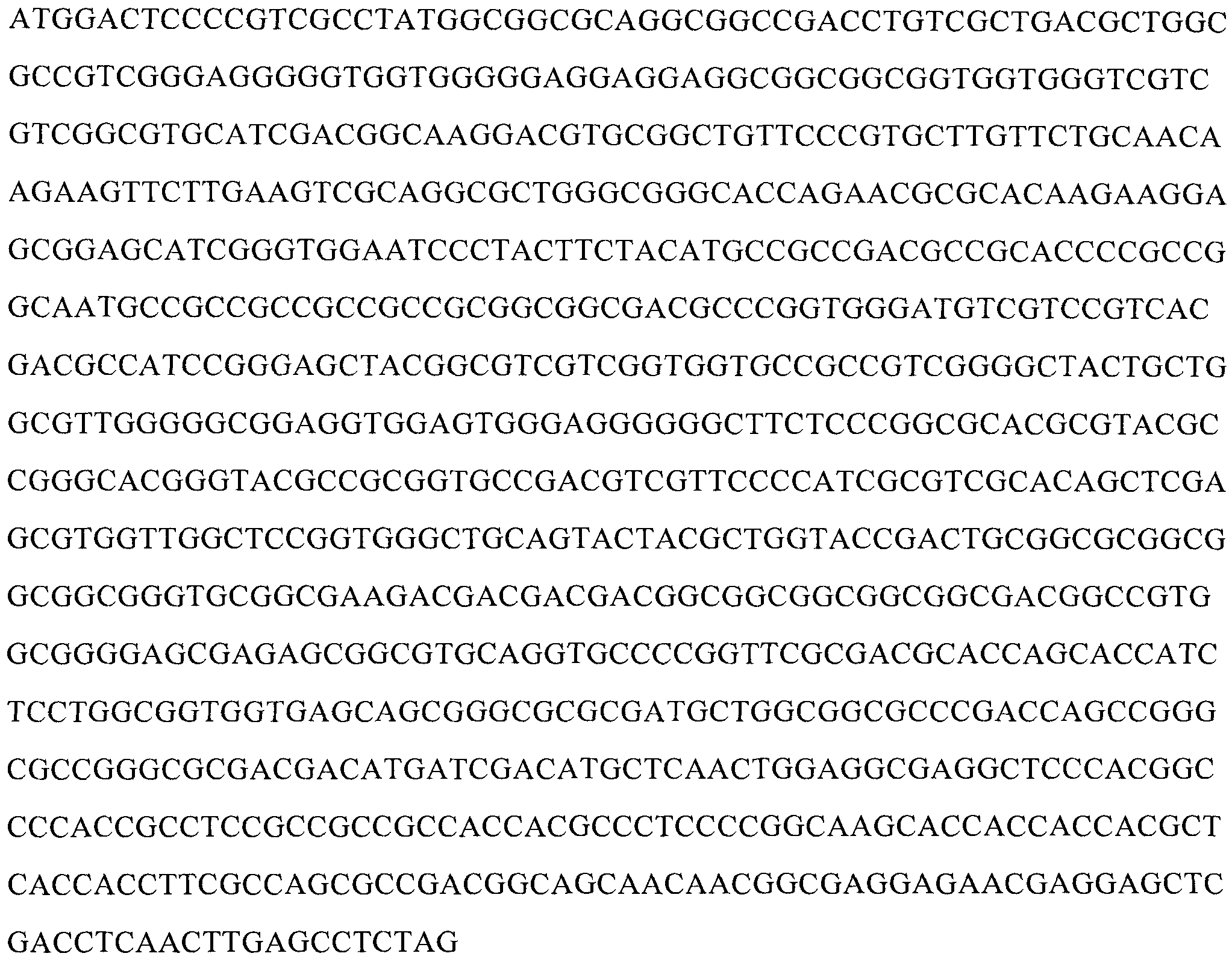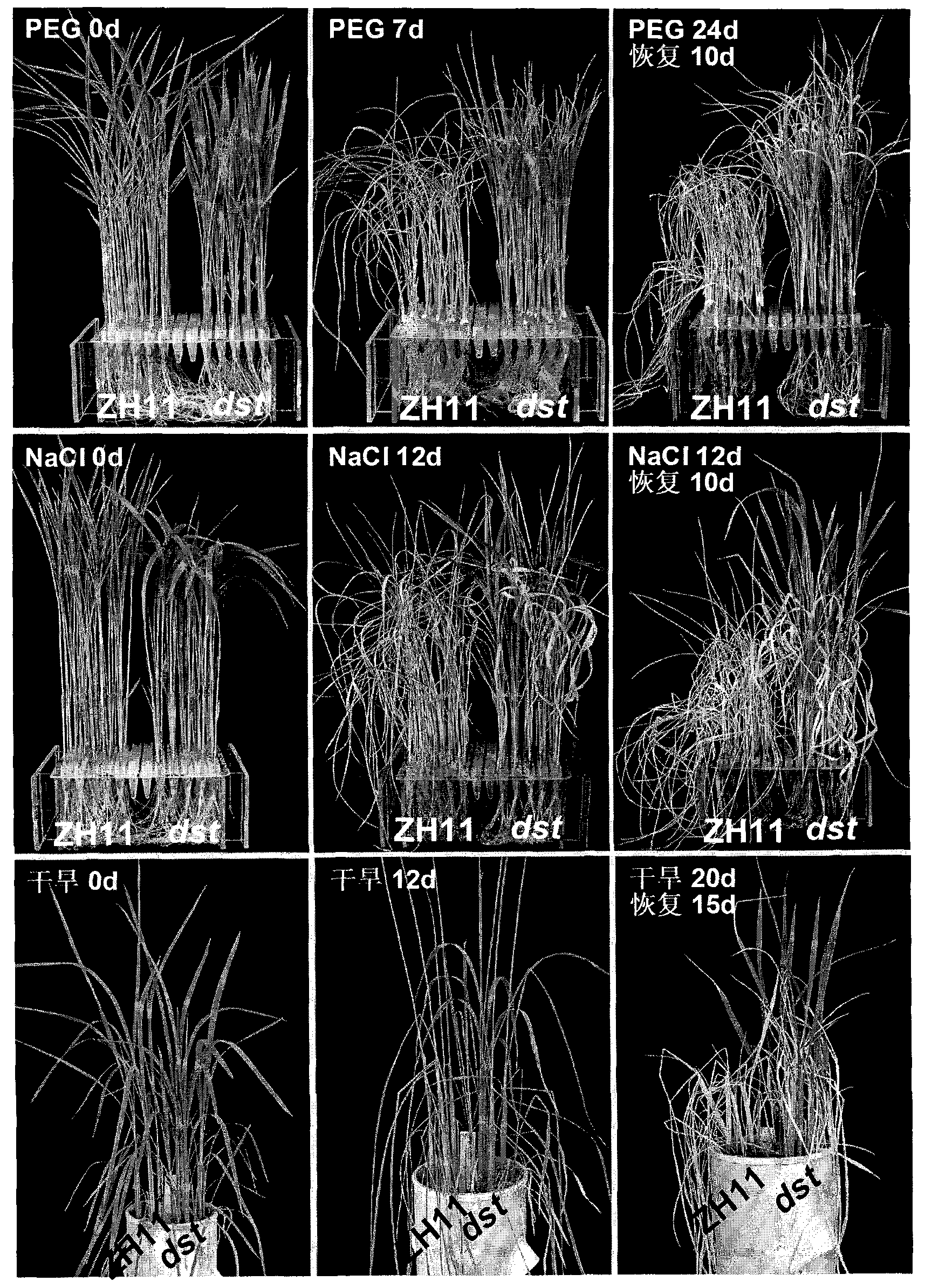New gene for rice zinc-finger protein transcription factor and application thereof to drought resistance and salt tolerance
A technology of transcription factor and zinc finger protein, applied in the fields of plant bioengineering and plant improvement genetic engineering
- Summary
- Abstract
- Description
- Claims
- Application Information
AI Technical Summary
Problems solved by technology
Method used
Image
Examples
Embodiment 1
[0144] Embodiment 1: The rice transgenic experiment of DST
[0145] 1. Acquisition, traits and subcellular localization of highly drought- and salt-tolerant DST mutants
[0146] Rice seeds were treated with 0.6% EMS to construct a rice mutant library containing about 9000 lines. Under the salt stress of 140mM sodium chloride concentration, the rice mutant library was screened on a large scale, and the candidate mutants were verified by repeated salt stress of 140mM sodium chloride concentration and 20% PEG4000 simulated drought stress, and the salt-tolerant and drought-resistant phenotypes were observed , to obtain a highly drought-resistant, salt-tolerant mutant (dst).
[0147] The DST gene was initially located on rice chromosome 3 by molecular markers. A large-scale F2 population was constructed by crossing dst mutants with salt-sensitive varieties, and molecular markers were used to screen exchanged individuals from the population, and combined with the genotype and ph...
Embodiment 2
[0165] Embodiment 2: Cultivation of transgenic plants and drought, salt stress test
[0166] The seeds of the transgenic rice obtained in Example 1 were taken, and after dormancy was broken in an oven at 45° C. for one week, the seeds were soaked in tap water at room temperature for 3 days, and germinated at 37° C. for 2 days. After germination, they were seeded in 96-well plates on demand. Then move them into a light incubator, culture at 30°C, and light for 13 hours a day. One day later, the temperature was gradually lowered to 28°C and 26°C for another day, and culture was carried out at 20°C at night. After the seedlings are basically out, the tap water is replaced with rice culture medium for cultivation.
[0167] After cultivating for about 14 days, the seedlings grow to the stage of two leaves and one heart, and the rice culture containing 140mM NaCl is used for salt treatment for 12 days, or the rice culture solution containing 20% (m / v) PEG-4000 is used for PEG ...
Embodiment 3
[0172] Example 3: Analysis of transcriptional activation activity of DST
[0173] Transcriptional activation of DST was analyzed using the Matchmaker GAL4 yeast two-hybrid system 3 (Clontech). In order to construct the positive control vector pAD, the activation domain sequence of NLS and GAL4 was fused with the DNA binding domain of GAL4, and constructed on the pGBKT7 vector (purchased from Clontech), wherein pAD was amplified by PCR to connect the NLS and AD of pGADT7 to On BamHI and SalI of pGBKT7 (primers are SEQ ID NO: 6 and 7).
[0174] Then use the PCR method to amplify the full-length ORF of DST (primers are SEQ ID NO: 8 and 9), and construct it on the BamHI and SalI of the pGBKT7 vector after correct sequencing, so as to fuse with the DNA binding domain of GAL4 to obtain pGBKT7-DST carrier. Transform various vectors into yeast strain AH109, dilute the strains grown overnight, spread on the SD medium lacking Trp or lacking three amino acids (-Trp / -His / -Ade), and ...
PUM
 Login to View More
Login to View More Abstract
Description
Claims
Application Information
 Login to View More
Login to View More - R&D
- Intellectual Property
- Life Sciences
- Materials
- Tech Scout
- Unparalleled Data Quality
- Higher Quality Content
- 60% Fewer Hallucinations
Browse by: Latest US Patents, China's latest patents, Technical Efficacy Thesaurus, Application Domain, Technology Topic, Popular Technical Reports.
© 2025 PatSnap. All rights reserved.Legal|Privacy policy|Modern Slavery Act Transparency Statement|Sitemap|About US| Contact US: help@patsnap.com



